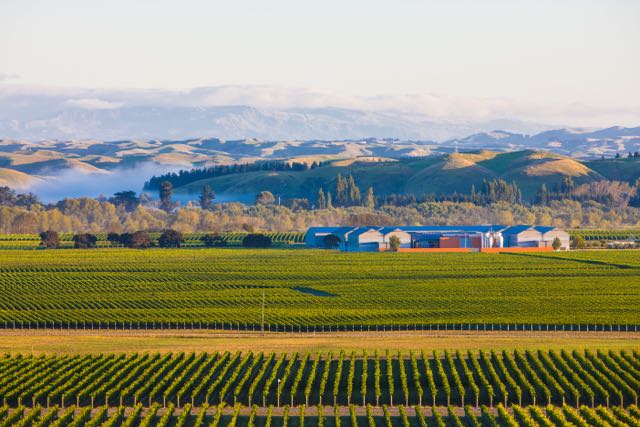If you see Matt Stafford, Craggy Range’s chief winemaker giving his vines a damn good kick in the run-up to harvest, is he:
a) mad that the local air force has done a practice ‘drop’ and taken out part of the vineyard;
b) lamenting the Black Caps’ latest loss (McCullum had an off day);
c) checking for slipskin?
All three are plausible: in 2014, the local defence force’s practice drop went wrong and landed in the Gimblett Gravels, taking out some of Trinity Hill’s vineyard posts, and narrowly avoiding vineyard workers, a car and a shed.
Stafford, a lover of the game of cricket, might also be sad when his team lose but he doesn’t seem like the type to resort to violence on the vines, which leaves us with c) slipskin.
Yes, c is the answer. Matt loves to kick a vine if he thinks slipskin might be on the loose. Which is what exactly? A botrytis infection of the grapes. It can develop after a sudden burst of heavy rain occurs just before harvest. It’s hard to spot it with the naked eye but you need to harvest quickly to prevent botrytis spreading so any suspect vines need to be given a good old jiggle (or a kick) and grapes affected will drop off.
It can be an issue in the Gimblett Gravels subregion of Hawke’s Bay in dry years on these free-draining soils. A downpour can be a shock to the grape’s system so if there’s bad weather on the horizon, Matt notes, “we’ll drip irrigate before to give the wines a chance to get used to the water”. Basically, they provide a warm up to the main event to help avoid slipskin.
In 2011, there was plenty of kicking of vines and sadly slipskin did play a part, particularly with Merlot. Stafford explains the team saw “our last parcel of Merlot destined for Sophia [its flagship Bordeaux blend] slip before our eyes within eight hours of walking through the blocks, the difference between $70 and not even making the grade for $27.”
If it does get into wines, it can be detected through a “banana skin” note although I perceive an almond-like character.
If this has piqued your interest, you can find much more comprehensive detail in a handy factsheet produced by New Zealand Winegrowers.
In my next blog, I consider the evolution of Le Sol based on a tasting of nine vintages following our kick-around in the vineyard.

